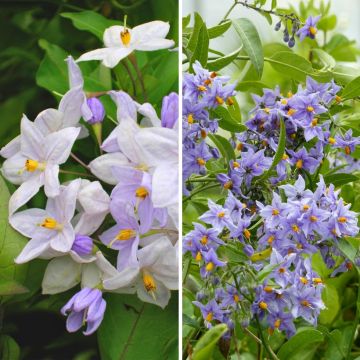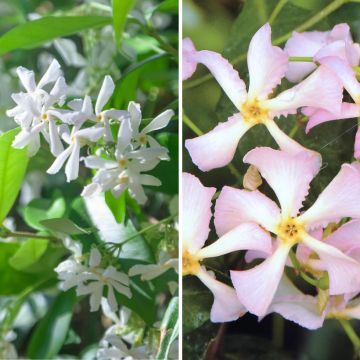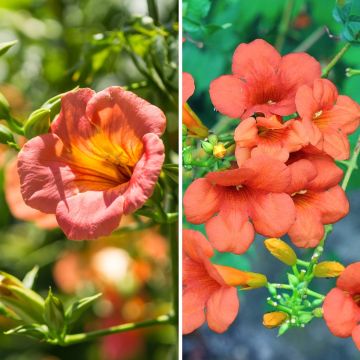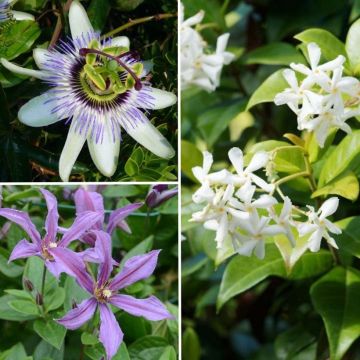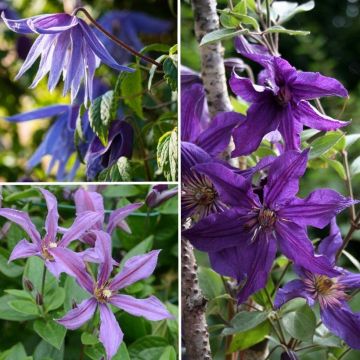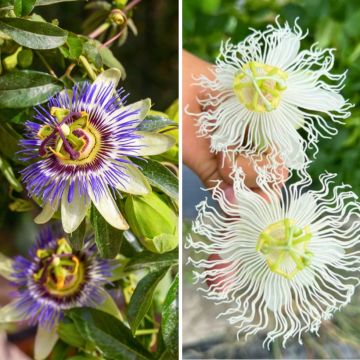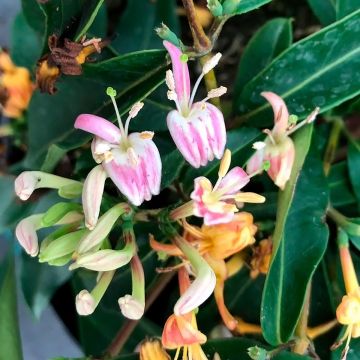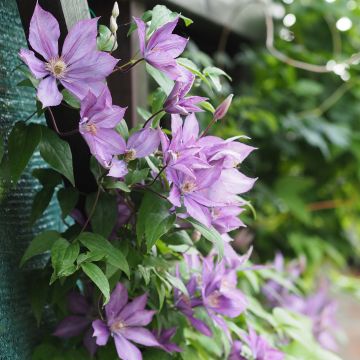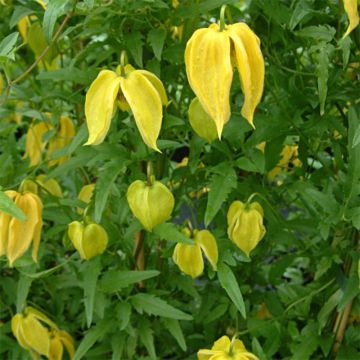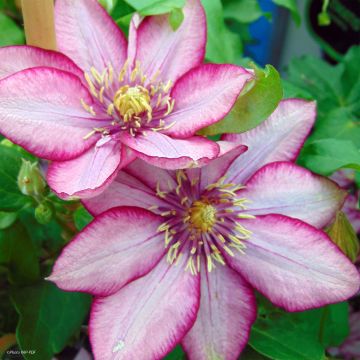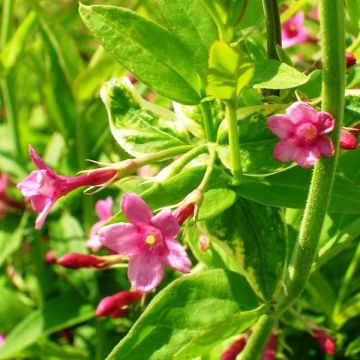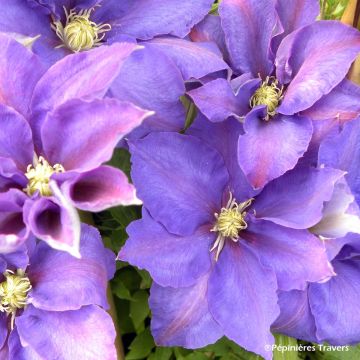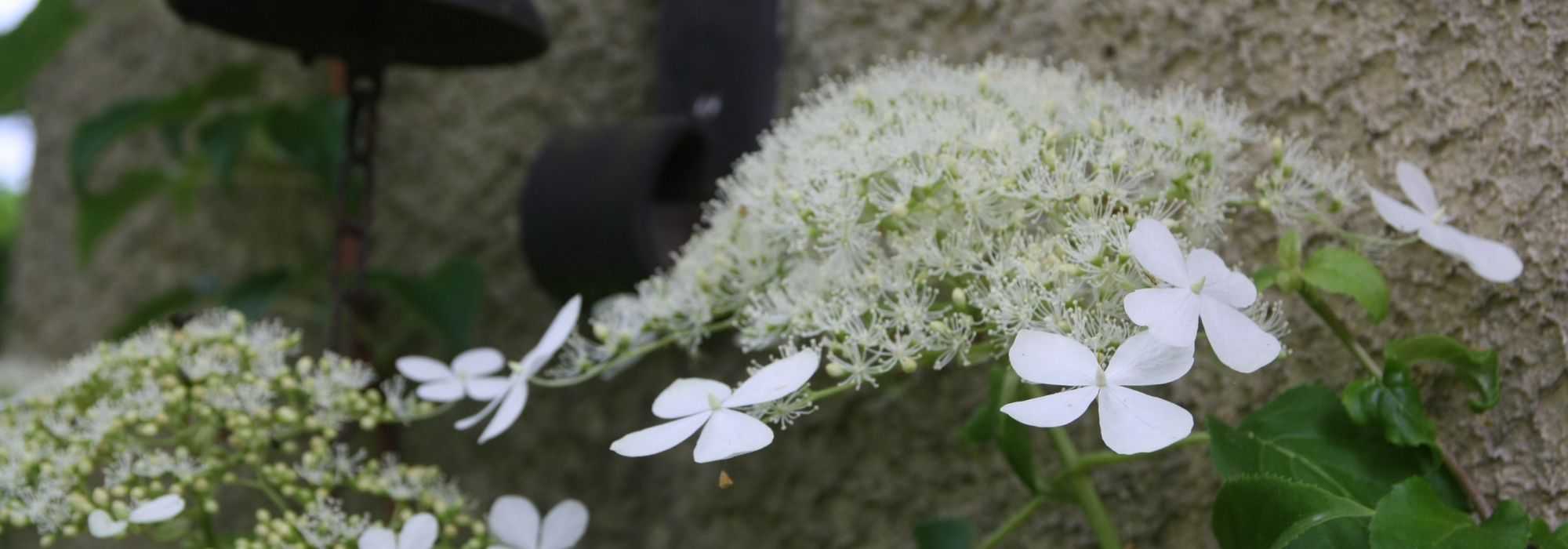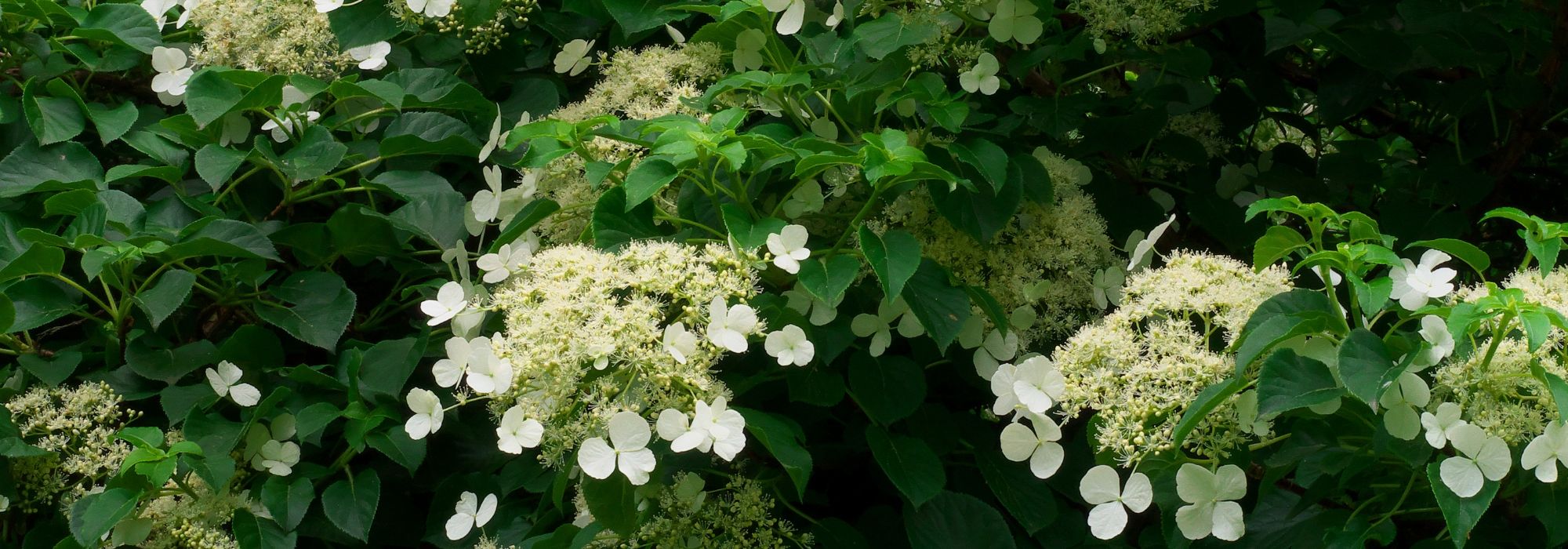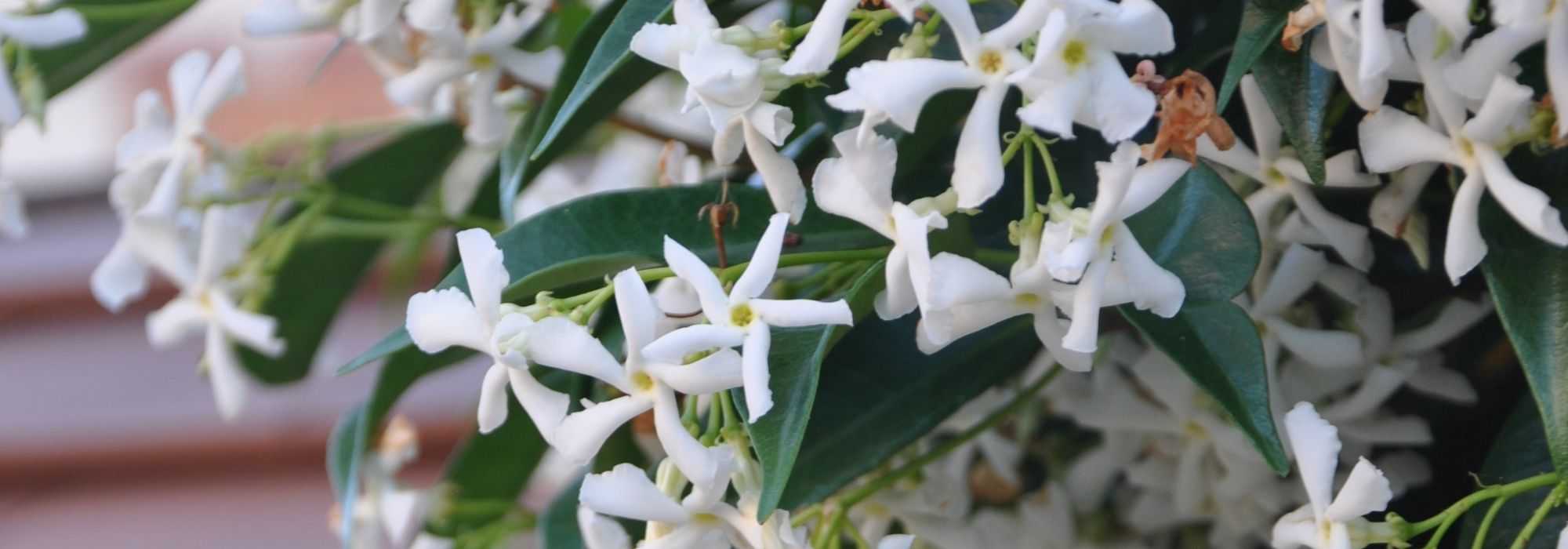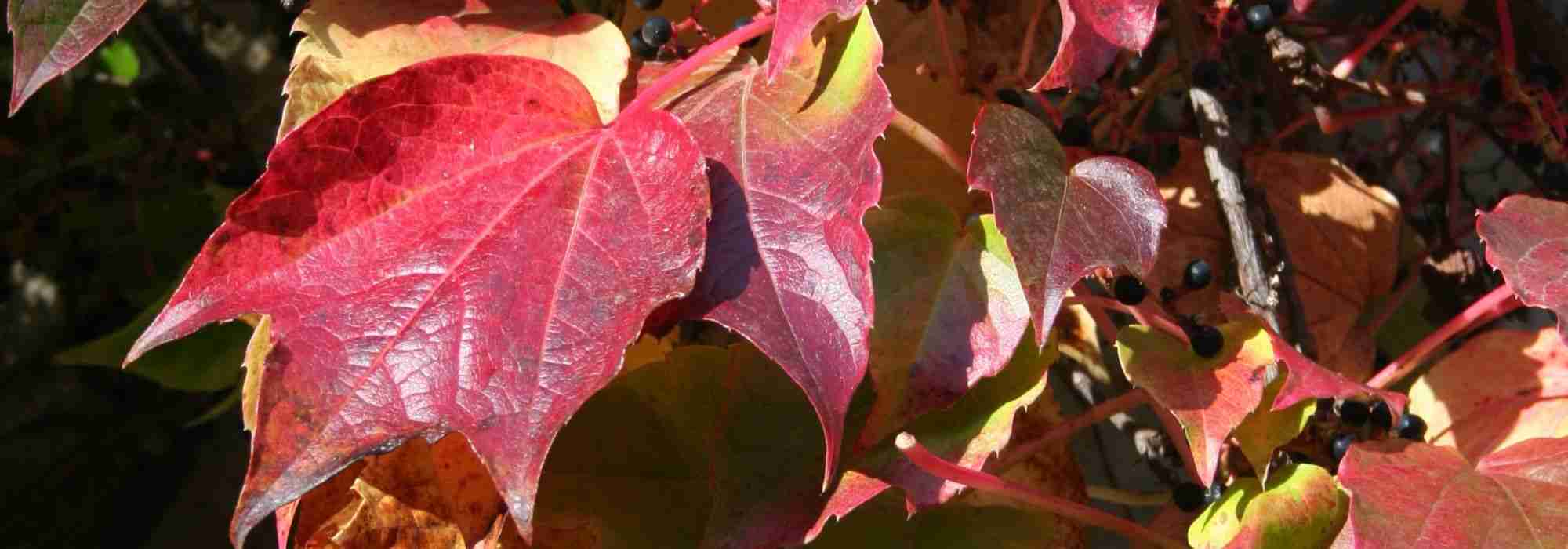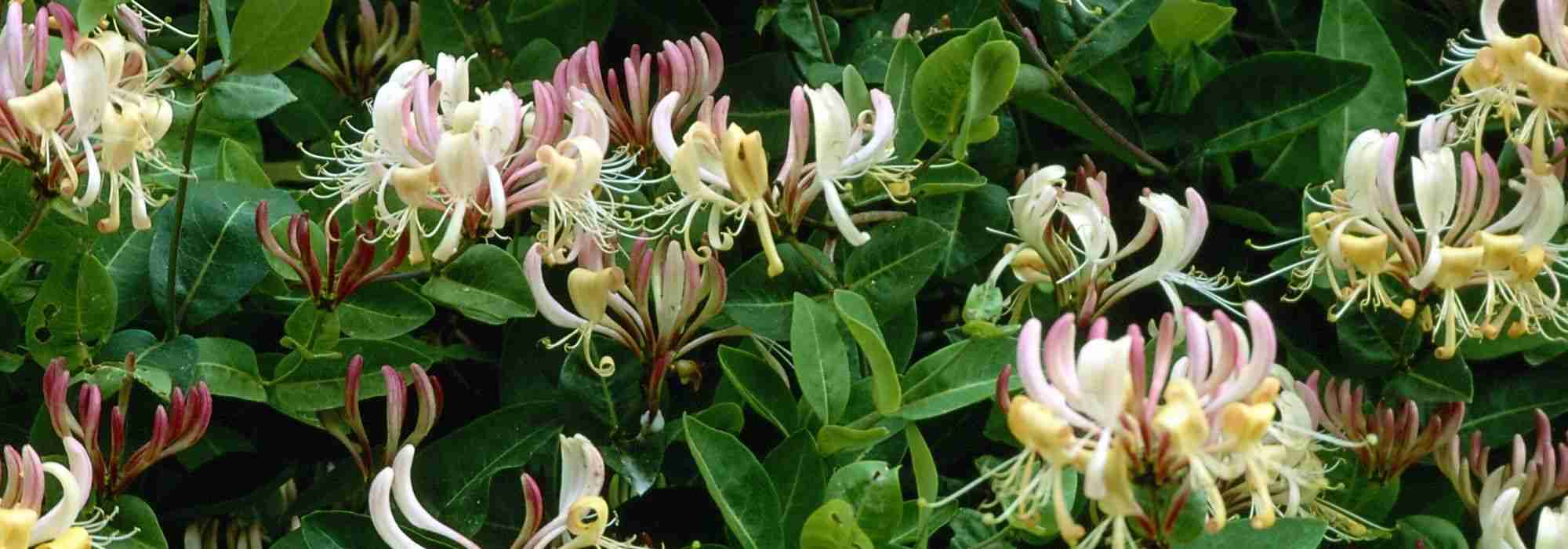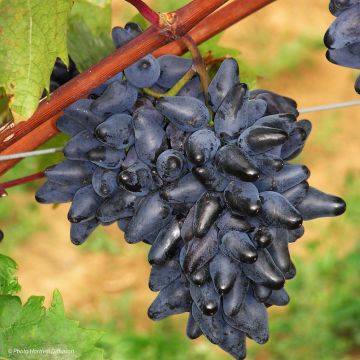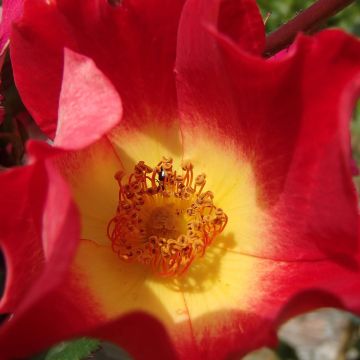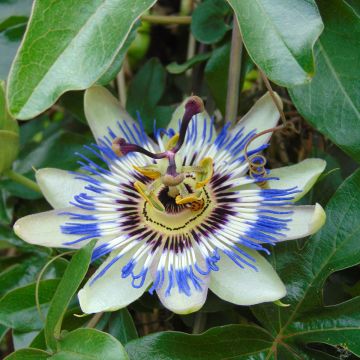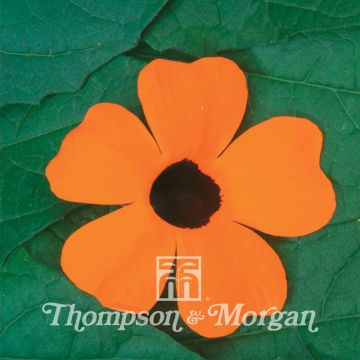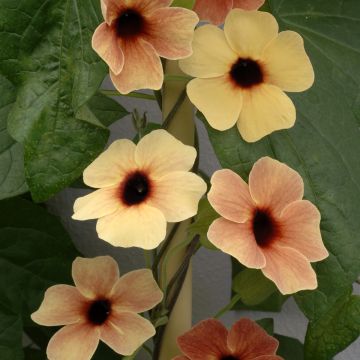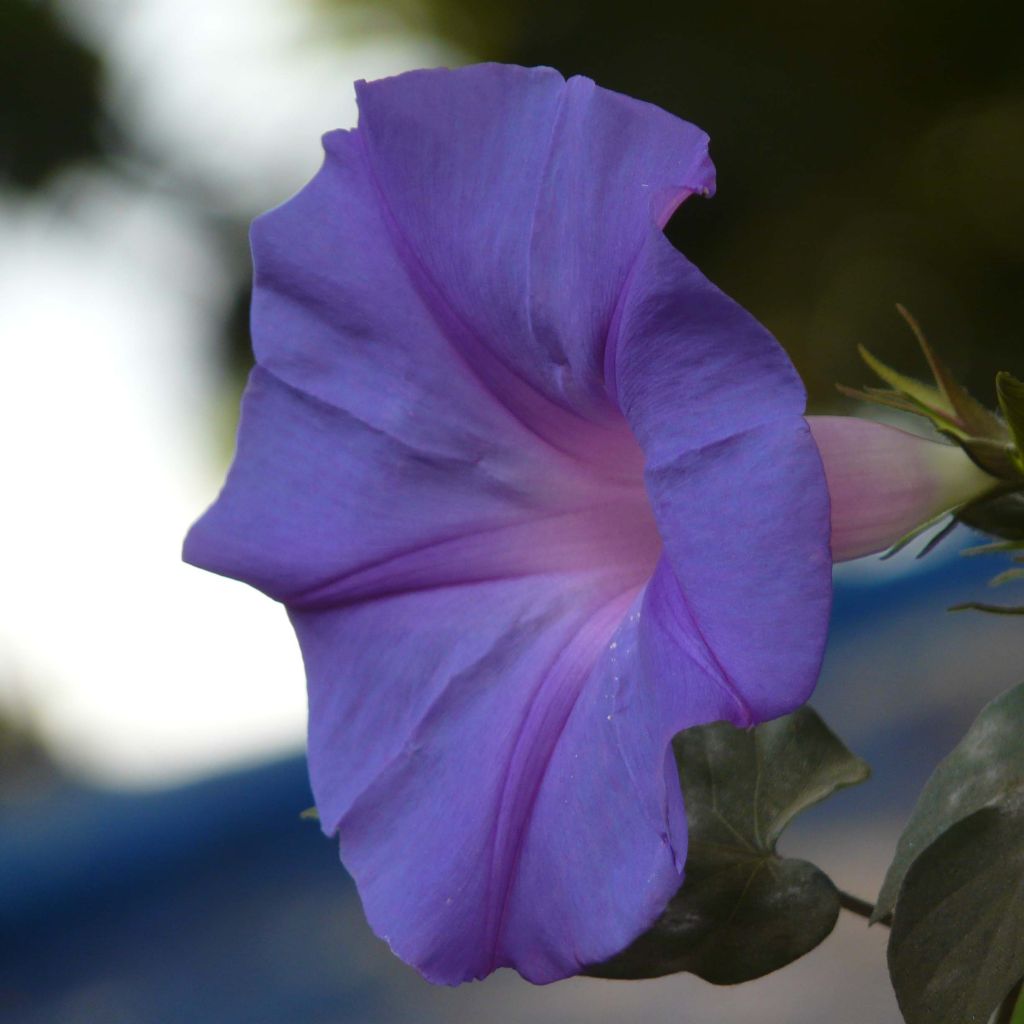

Ipomoea learii - Blue dawn flower
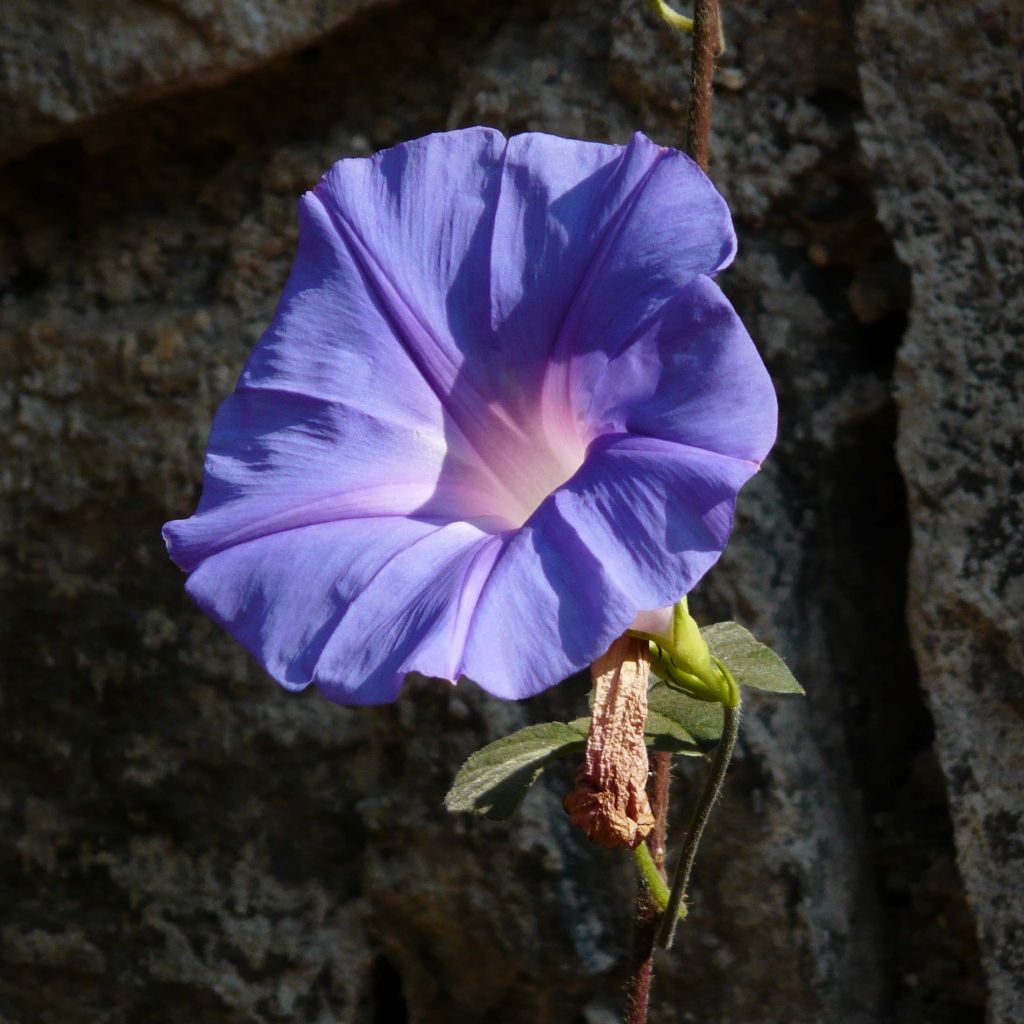

Ipomoea learii - Blue dawn flower
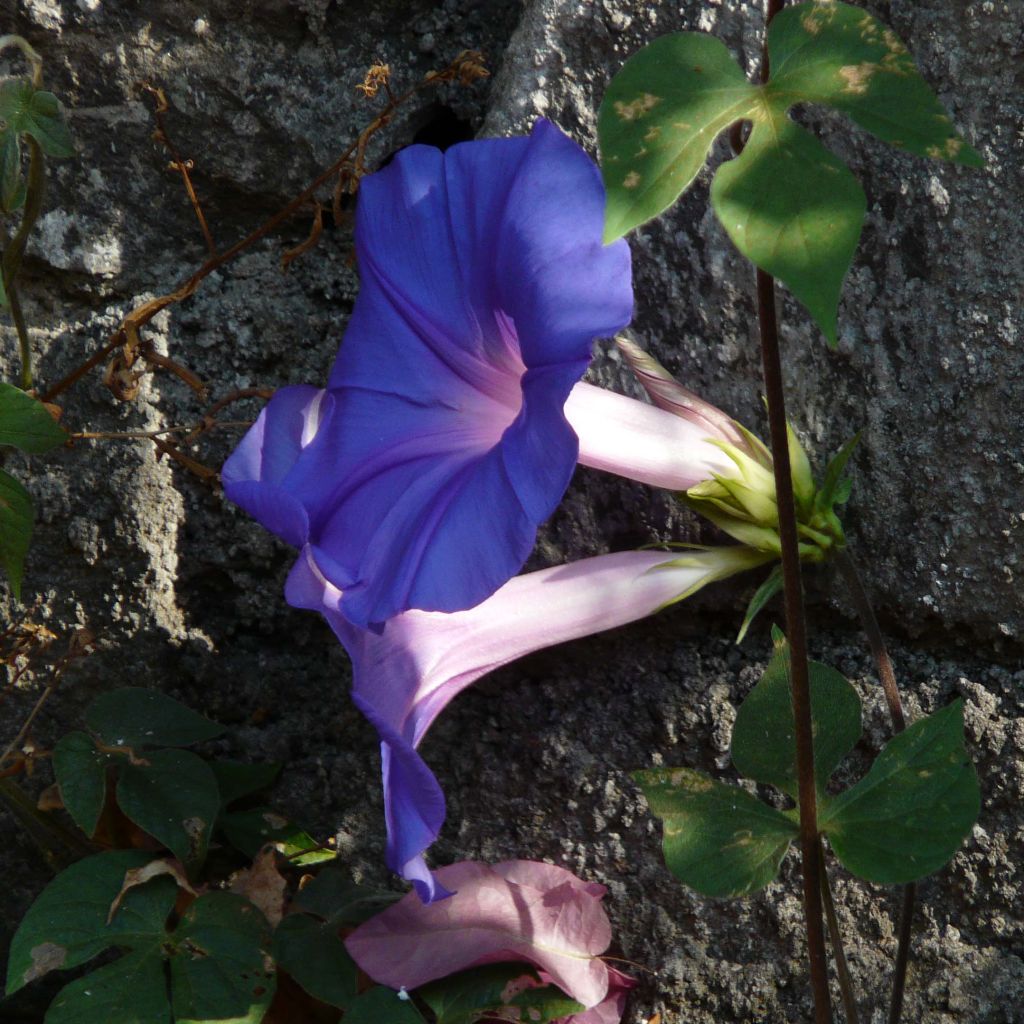

Ipomoea learii - Blue dawn flower
View more pictures
Hide images
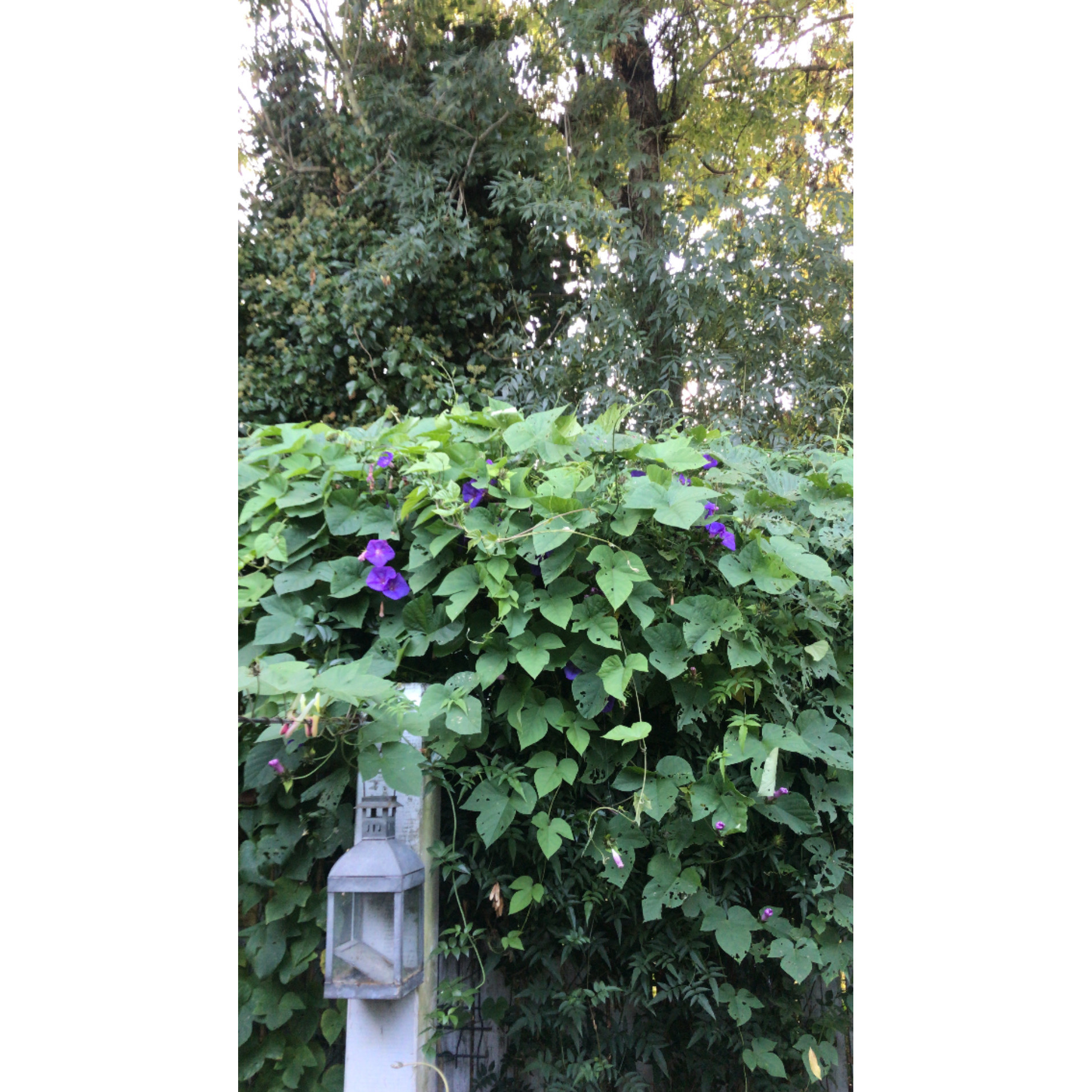
Claudine N.

Claudine N. • 17 FR
Ipomoea learii - Blue dawn flower
Ipomoea learii
Blue Dawn flower, Morning Glory
A beautiful vine, a turbo bindweed that has the advantage of withering with the slightest frost, so it doesn't become too invasive, regrows every year from the base or the non-frozen parts (where I have it growing near the slightly harsher side of the house), produces beautiful flowers from late May to November in northern Finistère. This plant doesn't seem to like the sea wind and spray, I haven't seen it by the seaside despite the slightly milder climate...
Eskil Bengtsson, 11/01/2020
Special offer!
Receive a €20 voucher for any order over €90 (excluding delivery costs, credit notes, and plastic-free options)!
1- Add your favorite plants to your cart.
2- Once you have reached €90, confirm your order (you can even choose the delivery date!).
3- As soon as your order is shipped, you will receive an email containing your voucher code, valid for 3 months (90 days).
Your voucher is unique and can only be used once, for any order with a minimum value of €20, excluding delivery costs.
Can be combined with other current offers, non-divisible and non-refundable.
Why not try an alternative variety in stock?
View all →This plant carries a 6 months recovery warranty
More information
We guarantee the quality of our plants for a full growing cycle, and will replace at our expense any plant that fails to recover under normal climatic and planting conditions.

Would this plant suit my garden?
Set up your Plantfit profile →
Description
Ipomoea indica, or Ipomoea learii, sometimes called Indian Morning Glory, is a perennial creeper with a sturdy root, flexible and with extremely vigorous twining stems capable of reaching over 10 metres in a season. The long tendrils of this morning glory run along the ground, rooting at each node as well as climbing the tallest trees, seeking the sun to produce thousands of flowers from July to October. These funnel-shaped corollas display a stunning blue-mauve hue, luminescent at dawn. They fade during the hottest hours of the day or in the evening, turning a more purplish shade. If you love lush plants that can cover a small arbour in a single season, adopt this beautiful morning glory in the ground or in a pot. It is quite drought-resistant and not very demanding in terms of soil. Make sure to provide enough space and monitor its growth!
Ipomoea indica belongs to the family of Convolvulaceae. This plant is likely native to tropical and subtropical regions of South America but has naturalised in many regions of the world where it finds mild winters and long hot summers. In Europe, it is commonly found in the northern part of Spain, as well as in France, in slightly humid areas or in gardens in the south. It is an evergreen herbaceous liana if it does not freeze, completely deciduous below -3°C. Its root, well protected, can withstand short freezes around -8°C. The growth of this plant is rapid as soon as the temperature rises in spring. From the ground, flexible hairy stems emerge, resembling strong ropes, often tinged with purple. The stems are either creeping, ensuring the plant's horizontal development, or climbing, ensuring flowering. They bear large leaves (15cm x 18cm) divided into 3 to 5 cordate lobes, of a fairly dark green colour, hairy on both sides. The incredible flowering, often visited by large bees, usually begins in July and does not end until October. At the axil of the branches, clusters of tightly coiled buds emerge at the end of long peduncles. They gradually open into large funnel-shaped flowers measuring 8-10cm in diameter. The flowers are blue-mauve in the morning, with pink rays that dive into a small white throat. They open at sunrise, turn purple during the day, and close in the late afternoon. In Mediterranean climates, the flowers often close in early afternoon due to intense heat. This morning glory rarely produces seeds in European climates, except in very privileged areas.
Ipomoea learii twines vigorously, if left to its own devices, up to the tops of trees. It is spectacular on an old hedge or a tall wall. It requires, in most European climates, a sheltered location. By training the twining stems as they grow, this plant can be used to cover a fence, trellis, or arbour, thanks to its vigor. In the garden or in a large pot on the terrace, it can accompany Mandevilla laxa, with its white and fragrant flowers, or mix with the blooms of annual morning glories, clematis, and other honeysuckles. This Ipomoea can also be grown in large containers that can be protected from severe cold.
Report an error about the product description
Ipomoea learii - Blue dawn flower in pictures
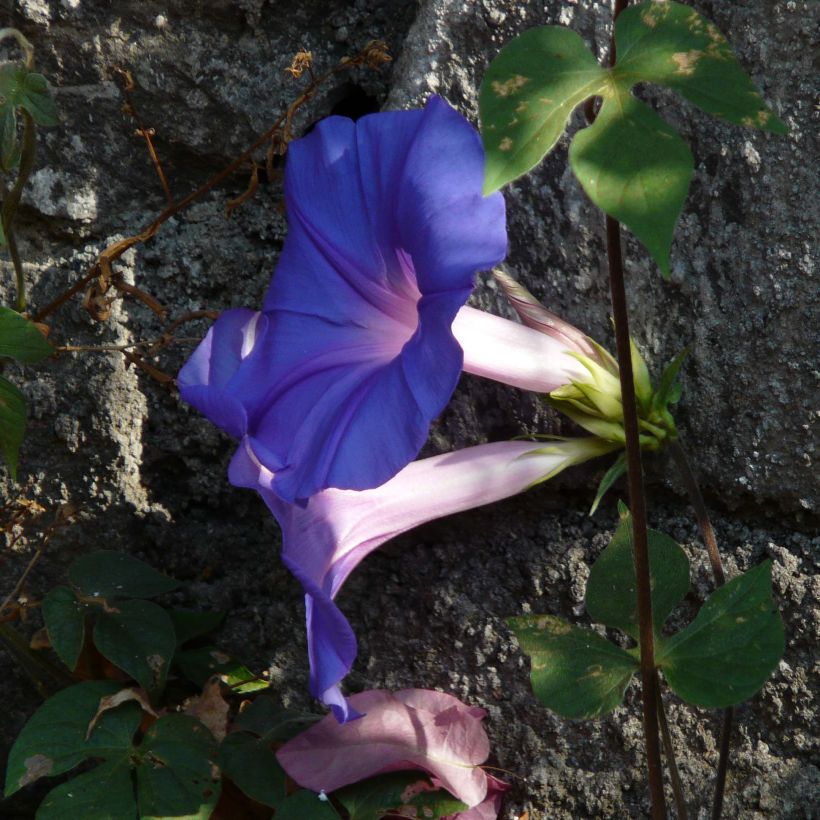

Plant habit
Flowering
Foliage
Botanical data
Ipomoea
learii
Convolvulaceae
Blue Dawn flower, Morning Glory
South America
Other Climbers A to Z
View all →Planting and care
Install the Ipomoea learii in a sunny, well-exposed location protected from prevailing winds that can damage flowers and leaves. A plant that has been in the ground for several years will better withstand the cold, down to -8°C if its stump is protected by a thick mulch in winter. Plant it in deep, well-drained, fertile soil to support flowering, light, and rich in humus. Once established, it tolerates summer drought fairly well, at the expense of flowering and lush foliage. Pot cultivation is easy and allows the plant to be protected from severe frost. Lighten the substrate by incorporating clay pellets or gravel at the bottom of the pot or planting hole. The mixture could consist, for example, of 1/3 potting soil, 1/3 garden soil, and 1/3 compost. Train the plant as it grows. Water regularly, especially in hot and dry weather. Ipomoea indica is an unruly plant, capable of covering large areas through its stems, which easily root at the nodes. It also tends to run them in shady, cool corners, out of sight (for example, along the wall bordering the terrace or through rainwater drainage holes). Therefore, it is advisable to give it space, preferably not too close to the house. If the plant has frozen, prune all dry stems in March. It will regrow from the stump.
This plant multiplies very easily by spontaneous layering, but also by cuttings in water or in a water-saturated medium: a 1m stem, coiled on itself for 50cm and immersed in a bottle of water with the neck cut off, is capable of producing roots in about ten days if the weather is warm. Then place this rooted stem portion in a pot filled with water-saturated potting soil (placing a saucer underneath). Gradually wean the plant off water. It is preferable for the young ipomoea to spend its first winter protected from frost. Plant it in the ground in spring.
Planting period
Intended location
Care
Planting & care advice
-
, onOrder confirmed
Reply from on Promesse de fleurs
Similar products
Haven't found what you were looking for?
Hardiness is the lowest winter temperature a plant can endure without suffering serious damage or even dying. However, hardiness is affected by location (a sheltered area, such as a patio), protection (winter cover) and soil type (hardiness is improved by well-drained soil).

Photo Sharing Terms & Conditions
In order to encourage gardeners to interact and share their experiences, Promesse de fleurs offers various media enabling content to be uploaded onto its Site - in particular via the ‘Photo sharing’ module.
The User agrees to refrain from:
- Posting any content that is illegal, prejudicial, insulting, racist, inciteful to hatred, revisionist, contrary to public decency, that infringes on privacy or on the privacy rights of third parties, in particular the publicity rights of persons and goods, intellectual property rights, or the right to privacy.
- Submitting content on behalf of a third party;
- Impersonate the identity of a third party and/or publish any personal information about a third party;
In general, the User undertakes to refrain from any unethical behaviour.
All Content (in particular text, comments, files, images, photos, videos, creative works, etc.), which may be subject to property or intellectual property rights, image or other private rights, shall remain the property of the User, subject to the limited rights granted by the terms of the licence granted by Promesse de fleurs as stated below. Users are at liberty to publish or not to publish such Content on the Site, notably via the ‘Photo Sharing’ facility, and accept that this Content shall be made public and freely accessible, notably on the Internet.
Users further acknowledge, undertake to have ,and guarantee that they hold all necessary rights and permissions to publish such material on the Site, in particular with regard to the legislation in force pertaining to any privacy, property, intellectual property, image, or contractual rights, or rights of any other nature. By publishing such Content on the Site, Users acknowledge accepting full liability as publishers of the Content within the meaning of the law, and grant Promesse de fleurs, free of charge, an inclusive, worldwide licence for the said Content for the entire duration of its publication, including all reproduction, representation, up/downloading, displaying, performing, transmission, and storage rights.
Users also grant permission for their name to be linked to the Content and accept that this link may not always be made available.
By engaging in posting material, Users consent to their Content becoming automatically accessible on the Internet, in particular on other sites and/or blogs and/or web pages of the Promesse de fleurs site, including in particular social pages and the Promesse de fleurs catalogue.
Users may secure the removal of entrusted content free of charge by issuing a simple request via our contact form.
The flowering period indicated on our website applies to countries and regions located in USDA zone 8 (France, the United Kingdom, Ireland, the Netherlands, etc.)
It will vary according to where you live:
- In zones 9 to 10 (Italy, Spain, Greece, etc.), flowering will occur about 2 to 4 weeks earlier.
- In zones 6 to 7 (Germany, Poland, Slovenia, and lower mountainous regions), flowering will be delayed by 2 to 3 weeks.
- In zone 5 (Central Europe, Scandinavia), blooming will be delayed by 3 to 5 weeks.
In temperate climates, pruning of spring-flowering shrubs (forsythia, spireas, etc.) should be done just after flowering.
Pruning of summer-flowering shrubs (Indian Lilac, Perovskia, etc.) can be done in winter or spring.
In cold regions as well as with frost-sensitive plants, avoid pruning too early when severe frosts may still occur.
The planting period indicated on our website applies to countries and regions located in USDA zone 8 (France, United Kingdom, Ireland, Netherlands).
It will vary according to where you live:
- In Mediterranean zones (Marseille, Madrid, Milan, etc.), autumn and winter are the best planting periods.
- In continental zones (Strasbourg, Munich, Vienna, etc.), delay planting by 2 to 3 weeks in spring and bring it forward by 2 to 4 weeks in autumn.
- In mountainous regions (the Alps, Pyrenees, Carpathians, etc.), it is best to plant in late spring (May-June) or late summer (August-September).
The harvesting period indicated on our website applies to countries and regions in USDA zone 8 (France, England, Ireland, the Netherlands).
In colder areas (Scandinavia, Poland, Austria...) fruit and vegetable harvests are likely to be delayed by 3-4 weeks.
In warmer areas (Italy, Spain, Greece, etc.), harvesting will probably take place earlier, depending on weather conditions.
The sowing periods indicated on our website apply to countries and regions within USDA Zone 8 (France, UK, Ireland, Netherlands).
In colder areas (Scandinavia, Poland, Austria...), delay any outdoor sowing by 3-4 weeks, or sow under glass.
In warmer climes (Italy, Spain, Greece, etc.), bring outdoor sowing forward by a few weeks.






























